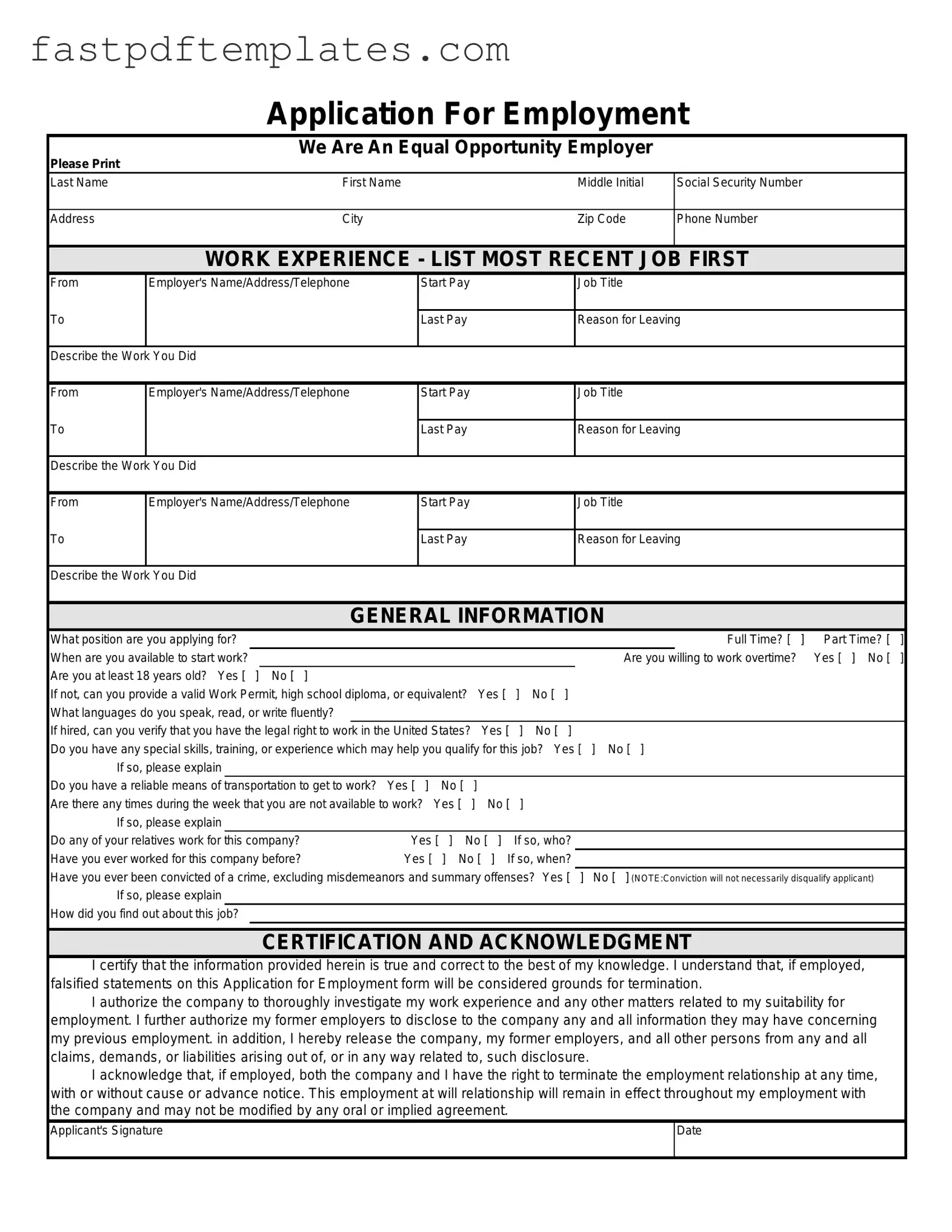The Spanish Application Employment form shares similarities with the Job Application form commonly used in the United States. Both documents request personal information, including the applicant's name, address, and contact details. Each form typically requires the applicant to provide their Social Security number, which is essential for employment verification. Additionally, both forms emphasize the importance of honesty, as they include sections where applicants must certify the accuracy of the information provided.
Another similar document is the Resume. While the Resume provides a summary of an applicant's qualifications and experiences, both documents serve the purpose of presenting the candidate to potential employers. The Work Experience section of the Spanish Application Employment form mirrors the Employment History section often found in Resumes, detailing previous job titles, responsibilities, and reasons for leaving. Both formats aim to highlight relevant experience to help employers assess the applicant's suitability for the position.
The Cover Letter is another document that aligns with the Spanish Application Employment form. A Cover Letter typically accompanies a Job Application or Resume and serves to express the applicant's interest in the position. Like the Application form, it allows candidates to elaborate on their qualifications and explain how their skills align with the job requirements. Both documents work together to create a comprehensive view of the applicant's capabilities and motivations.
The Reference List is also comparable to the Spanish Application Employment form. While the Application form may include a section asking for references, a Reference List is a separate document that provides names and contact information for individuals who can vouch for the applicant's qualifications. Both documents emphasize the importance of having credible sources to support the applicant's claims about their work experience and character.
The Interview Questionnaire often resembles the Spanish Application Employment form in that it is designed to gather specific information from candidates. Both documents may ask about availability, willingness to work overtime, and any special skills or training that could be relevant to the job. While the Interview Questionnaire is typically used during the interview process, both documents aim to assess the applicant's fit for the position.
The Employee Onboarding Form is another related document. This form is usually completed after an applicant has been hired, but it gathers similar information regarding personal details, work history, and legal eligibility to work. Both forms ensure that the employer has the necessary information to comply with legal requirements and facilitate a smooth hiring process.
The Job Offer Letter shares similarities with the Spanish Application Employment form as well. While the Job Offer Letter is sent after a candidate has been selected, it often reiterates details such as the position, salary, and start date. Both documents serve to formalize the employment process, ensuring that both the employer and the employee are on the same page regarding expectations and responsibilities.
Lastly, the Employment Verification Form is akin to the Spanish Application Employment form in that it is used to confirm an applicant's previous employment. This document may be requested by employers to verify the information provided in the Application form. Both forms focus on ensuring that the applicant's work history is accurate and can be substantiated by previous employers.


